All About LED Paving Slabs
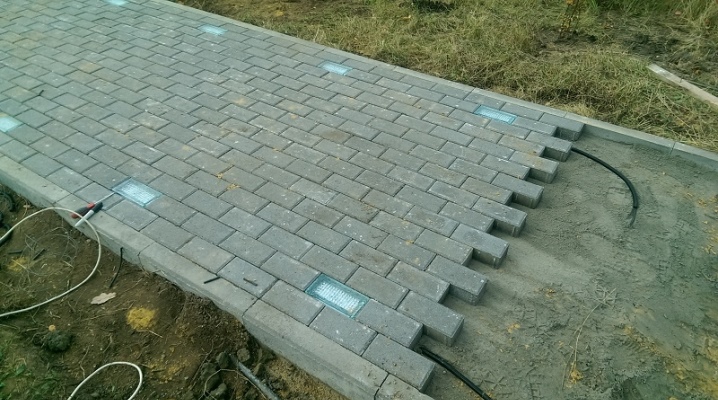
Glowing paving slabs attract attention, and do-it-yourself production, as well as the choice of lighting for outdoor placement, are available to everyone. Such a design solution looks interesting in the garden landscape, in the local area, in parks and in public spaces. But before implementing it, it is worth learning more about what kind of LED paving stones and other backlit tiles are.
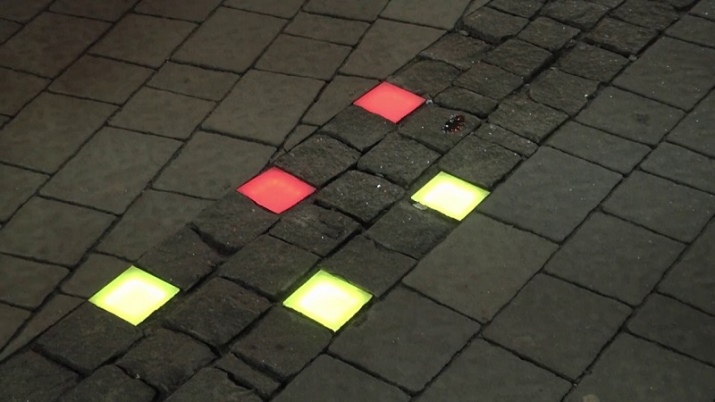
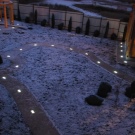
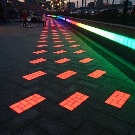
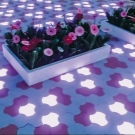

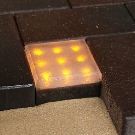
Peculiarities
Luminous paving slabs are a type of material used to decorate adjoining and public areas. In the dark, the coating with such elements looks especially impressive, and during the day, the elements are difficult to distinguish from other components of a pedestrian, bicycle or motor road. Paving is extremely rarely done solid. Most often, a checkerboard arrangement of blocks is used or inserts are made at a certain distance.
The most affordable option for such a decor is LED tiles, which are a lamp in a reinforced housing, completely insulated from moisture. The bulbs inside it are located in pairs, in addition, the design necessarily provides for the presence of a power cord or solar battery.
With a stationary connection to a power source, the design can be supplemented with controllers that allow you to change the color gamut or luminescence mode. The main function of LED lamps is to provide illumination of the paved area at night. For the garden, non-volatile models with a built-in battery are traditionally chosen. These tiles absorb light during the day, converting it into energy, and then release it after sunset. A built-in light sensor helps electrical appliances not to waste their energy, but in long cloudy weather, tiles with a power cord turn out to be more reliable.
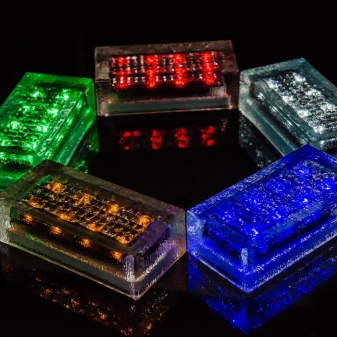
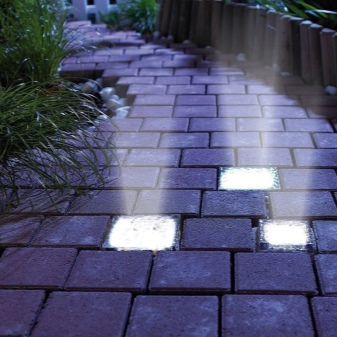
The disadvantages of luminous LED tiles include their cost - on average, 5-10 times higher than that of classic counterparts. However, the advantages of the lamps still outweigh, because they have the following set of technical characteristics.
- The body is rectangular, round or free-form. It is made of steel, polymer, glass with a translucent upper part.
- Withstanding temperature - from +40 to -40 degrees Celsius. Can be used in most regions from north to south.
- Resource LEDs. For LED lamps, it ranges from 10,000 hours for white and up to 25,000 for colored ones. When operating from 3 to 8 hours a day, the resource will last for a period of 3-10 years.
- Type of lamps. It can be classic or monochrome, as well as color changing - RGB.
- Technical equipment. It can be represented by motion and light sensors.
- Connection. To the controller (1 for 10 tiles) or power supply unit (for 7 elements). Solar powered models are equipped with a built-in metal hydride battery for 3 years of operation.
These are the main features that should be considered when choosing LED tiles for home or summer cottages, paving public spaces.
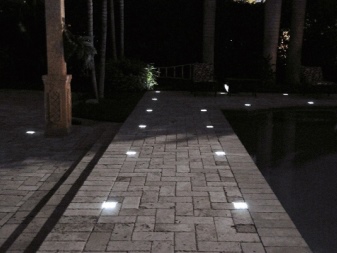
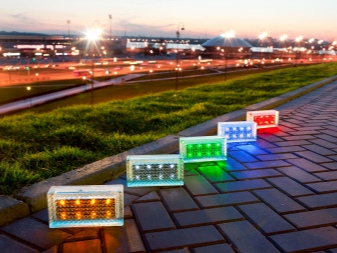
Views
LED paving stones or street tiles are a popular element in landscape design. Often it is built into curbs or framing ponds, they decorate the embankment or driveway to the house with it.The classification of this product of new technologies is also quite diverse.
The following categories can be distinguished.
- With network connection. A fairly simple option. Backlit elements are laid in place of ordinary paving stones, the cable is laid under the paving, connected to the network. The owner has the ability to adjust the duration and intensity of the backlight.
- Charged by the sun. In addition to built-in rechargeable batteries, it is usually also equipped with a light sensor, and sometimes a motion sensor. This is the most economical option for night illumination in a summer cottage or suburban area.
- Monochrome. During operation, the LED retains the original color gamut, does not change it. There is also a combination of a colored case and a simple white LED.
- Transparent multicolor. An RGB LED is installed in it, which can change its shade. Such solutions are most often chosen for highlighting public spaces - where public events are held, children spend time.
- With a change of modes. This LED tile requires connection to a special regulator, which will set the pace of color change or brightness, and other characteristics. The option is in demand when organizing parties and weddings, but it can also be of interest to lovers of summer cottage beautification.
These are the main varieties into which it is customary to divide the luminous paving slabs on LED elements. To choose the appropriate option among them is the task of the future owner himself.
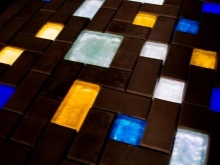

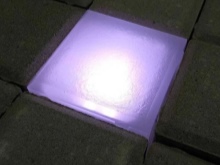
Manufacturing technology in production
In production, tiles are most often made with a phosphor, which has a luminescent effect - it glows in the dark. Substances belonging to this group can accumulate solar energy. In fact, during the day, their particles covering the outside of the tiles are charged, and at night they release the accumulated supply of light.
The technology for the industrial production of such paving paving is quite simple:
- a mixture for tiles based on sand, cement, water, plasticizers and phosphor is being prepared;
- the composition is fed to the vibrating table, where the forms have already been prepared;
- the mixture is tamped, under the influence of vibration it becomes compacted, solidifies after 3-4 days.
Manufacturers pay attention not only to the functionality of the coating. Luminous tiles with a luminescent effect have a wide range of thickness - from 30 to 90 mm, a variety of colors and shapes. This allows you to adapt products to almost any ready-made solution in the landscape. In the case of LED elements, the production process does not take much time, it differs little from the assembly of a conventional lamp. Products are simply assembled in a case, connected to a power source.
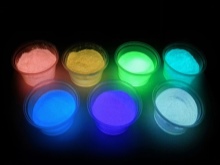
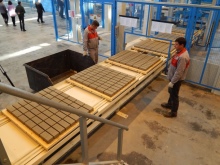

How to do it yourself?
To make a lamp with luminescent properties with your own hands you will need special form, with the help of which the products are cast and pressed. It can be made of wood or plastic, for the convenience of subsequent extraction of the product, it can be coated from the inside with a mixture based on water and oil. For several elements, the mixture can be prepared manually, and the phosphor can be applied separately to the decorative part of the tile, covering it with a protective varnish on top. This technology is much simpler than the factory one, and tiles can be made not only from cement, but also from clay.
At home, you can turn an ordinary tile into a luminous one in the following way.
- Prepare the desired amount of paving stones.
- Cover clean stones with a special concrete primer, which reduces the absorbency of the material.
- Prepare a mixture of 400 g of silicone compound or polymer resin, 100 g of luminescent powder and 20 g of pigment. Apply the resulting composition to a dry primed tile.
- Cover the hardened mixture with a protective varnish. It must be transparent, heat-resistant, withstand significant operational loads.

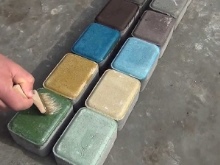
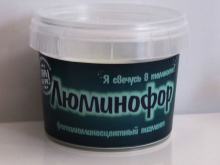
Solar or LED backlit tiles are assembled from durable fiberglass or corrugated plexiglass. The order will be like this.
- The LEDs are molded with resin. You can take 3D for the floor or for making jewelry. A clear or matte epoxy mix will work. Everything is left to solidify.
- Inside the transparent case, which in shape and size resembles a tile, the necessary electronic filling is embedded, filled with resin. Connects to a metal hydride battery. The number of LEDs on the board is selected individually; 6-8 lamps of different colors can be built in.
- The body seams are carefully sealed. The tile is mounted among other elements, usually it is located at the very edge of the path, at the curb.
As practice shows, a glass block is quite successfully used as a housing for LED tiles. It can be completely transparent or colored; its strength corresponds to the concrete grade M400.
It is safe to drive on such tiles even for trucks.
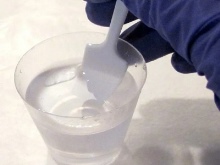
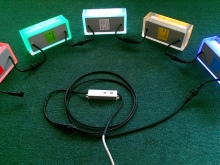

Beautiful examples
LED tiles perfectly complement natural landscapes. It is worth considering the most successful examples in more detail.
The elegant natural landscape becomes even more attractive, if it is framed by well-groomed paths with unusual lighting.
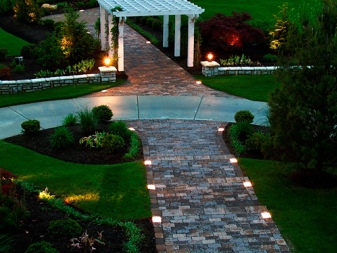
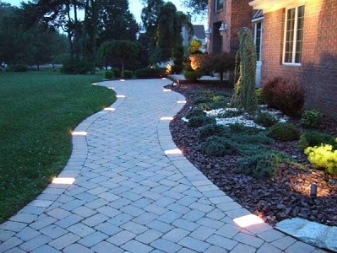
Decorating the porch area can also be attractive, especially if a path of LEDs leads to the entrance to the house.
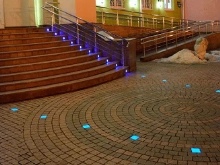
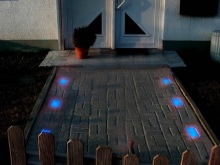
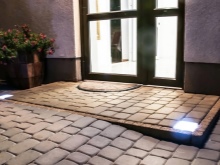
The romantic illumination of the evening city is complemented by LED elements, combined with classic paving stones.
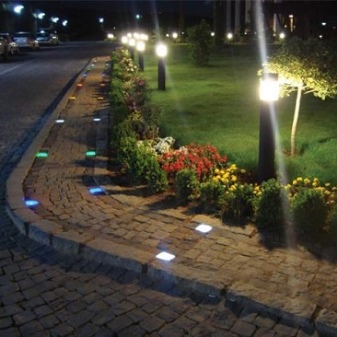
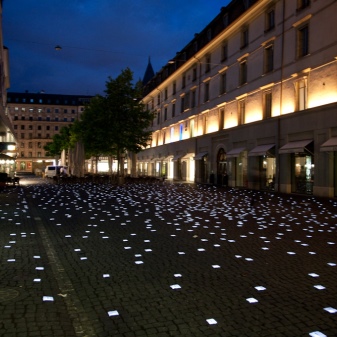
In the next video, you will find the installation of LED paving slabs.













The comment was sent successfully.